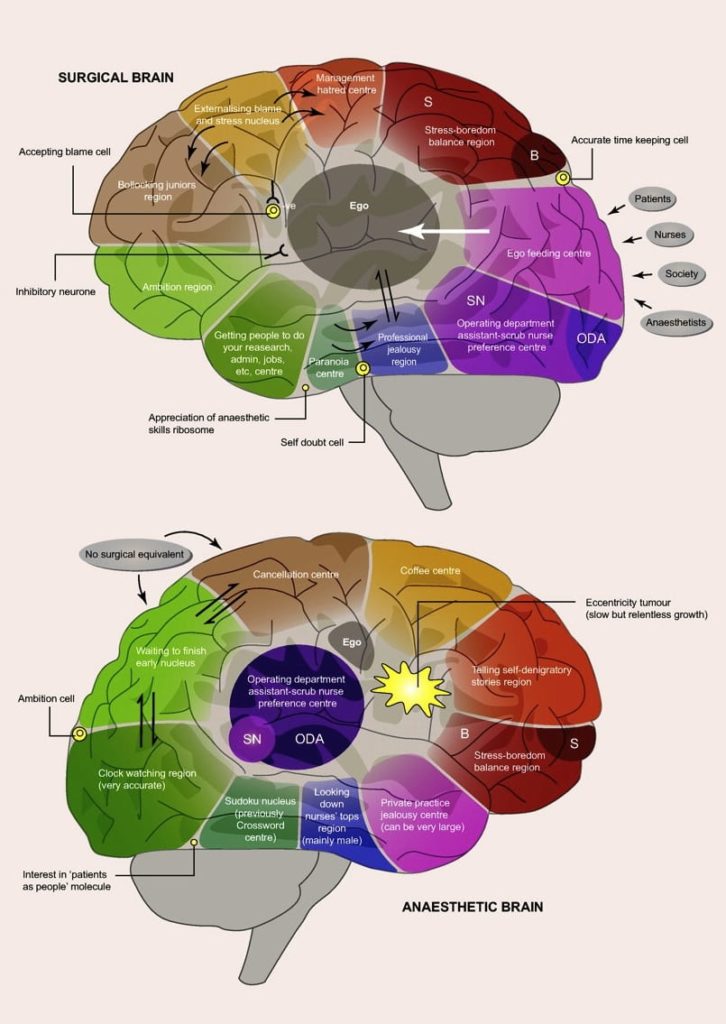Biological Basis for Blood-Brain Barrier
In briskly breaking news, UCEM’s brainiac neurologists have breathlessly briefed the LitFL team about their most brilliant breakthrough since they identified the threat ADHD treatment poses to the future of emergency medicine.
In the wake of the recent unceremonious disrobing of the Society for the Prevention of Surgery, UCEM neurologists have elucidated the biological determinants of the gaping chasm of character that separates ‘Knife-(wo)men’ from ‘Gas-(wo)men’. Finally there is an explanation for the operating room’s metaphorical, yet very real, blood-brain barrier.
PR supervisor Egerton Y. Davis IV, spokesperson for UCEM, said:
“This work is truly miraculous — a veritable marvel of functional neuroanatomical wizardry. We haven’t seen an advance like this since the days of Sir Thomas Willis, yes, he of the Spider. Willis, as I’m sure you recall, was first to localise basic motor functions to the cerebellum and brainstem of pigeons — by removing their cerebrums and packing their skulls with straw. Our neurologists have done a similar thing, but with surgeons and anaesthetists of course, not pigeons.”
“Sure, there will be naysayers — Sir Thomas himself had to put up with the constant refrain of, “What you talking about, Willis?” (RIP Gary Coleman), whenever he tried to disseminate his discoveries. Nevertheless, this work is amazing — it rightly takes its place alongside UCEM’s other endeavours in the pantheon of world-changing utopian medical research.”
With that, Assistant Sub-Professor Davis, unveiled these two intricately detailed functional brain maps (each magnified 10,000-fold, of course):

Lawrence Caldicott BMJ 2009
Chris is an Intensivist and ECMO specialist at The Alfred ICU, where he is Deputy Director (Education). He is a Clinical Adjunct Associate Professor at Monash University, the Lead for the Clinician Educator Incubator programme, and a CICM First Part Examiner.
He is an internationally recognised Clinician Educator with a passion for helping clinicians learn and for improving the clinical performance of individuals and collectives. He was one of the founders of the FOAM movement (Free Open-Access Medical education) has been recognised for his contributions to education with awards from ANZICS, ANZAHPE, and ACEM.
His one great achievement is being the father of three amazing children.
On Bluesky, he is @precordialthump.bsky.social and on the site that Elon has screwed up, he is @precordialthump.
| INTENSIVE | RAGE | Resuscitology | SMACC

